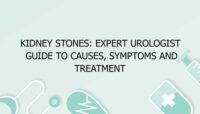Pachyonychia congenita (PC) is a rare genetic disorder characterized primarily by thickened nails, often accompanied by other skin and mucosal manifestations. The condition is caused by mutations in genes involved in keratin production, leading to the abnormal formation of keratinocytes. While PC is not life-threatening, it can significantly impact a person’s quality of life due to the associated symptoms. This article provides a comprehensive overview of the causes, symptoms, types, and treatment options for pachyonychia congenita, along with a thorough FAQ section and a compilation of relevant medical literature.
Causes of Pachyonychia Congenita
Pachyonychia congenita is primarily caused by mutations in genes that encode keratins, which are essential structural proteins in the skin, hair, and nails. The most commonly implicated genes include:
- KRT6A: Mutations in this gene are associated with PC type 1, leading to thickened nails, palmoplantar keratoderma, and oral leukokeratosis.
- KRT16 and KRT17: Mutations in these genes are associated with PC type 2 and can result in similar symptoms. KRT16 mutations often lead to a more severe phenotype.
- KRT14: This gene mutation is linked to a more severe form of the disorder, which can also involve blistering and more pronounced skin issues.
The inheritance pattern of pachyonychia congenita is autosomal dominant, meaning that only one copy of the mutated gene from an affected parent can lead to the condition in offspring. The prevalence of PC is estimated to be low, with only a few hundred reported cases worldwide.
Symptoms of Pachyonychia Congenita
The symptoms of pachyonychia congenita can vary widely among individuals, but the hallmark feature is the thickening of the nails, which usually begins in childhood or early adulthood. Other common symptoms include:
- Thickened Nails: The nails, especially on the fingers and toes, become abnormally thick, often leading to discomfort and difficulty in nail care.
- Palmoplantar Keratoderma: This refers to thickening of the skin on the palms of the hands and soles of the feet, which can cause pain and difficulty walking.
- Oral Lesions: Many individuals develop white patches or lesions in the mouth, particularly on the buccal mucosa and tongue.
- Blistering: Some forms of PC can lead to blister formation, particularly in areas of friction.
- Cysts: Epidermoid cysts can develop in the skin, particularly on the palms and soles.
Additional symptoms may include hair abnormalities, such as sparse or coarse hair, and potential changes in skin pigmentation. The severity and combination of symptoms can vary significantly among individuals with the condition.
Types of Pachyonychia Congenita
Pachyonychia congenita is classified into several types based on the specific genetic mutations and associated symptoms. The main types include:
- PC Type 1 (KRT6A Mutations): This is the most common form, characterized by thickened nails, palmoplantar keratoderma, and oral leukokeratosis. Symptoms typically present in childhood.
- PC Type 2 (KRT16 Mutations): This type may present with similar symptoms but often has a more severe phenotype, including additional skin lesions and more pronounced keratoderma.
- PC Type 3 (KRT17 Mutations): Individuals with this type often exhibit features similar to Type 1 but can also experience blistering skin, particularly on the palms and soles.
- PC Type 4 (KRT14 Mutations): This rare type can present with severe blistering and may lead to significant discomfort and mobility issues.
Table: Overview of Pachyonychia Congenita
| Aspect | Details |
|---|---|
| Definition | A rare genetic disorder characterized by thickened nails and skin lesions. |
| Causes | Mutations in keratin genes (KRT6A, KRT16, KRT17, KRT14). |
| Symptoms | Thickened nails, palmoplantar keratoderma, oral lesions, blistering. |
| Types | Type 1 (KRT6A), Type 2 (KRT16), Type 3 (KRT17), Type 4 (KRT14). |
| Inheritance | Autosomal dominant. |
| Diagnosis | Clinical examination, genetic testing. |
| Treatment | Symptomatic management, potential keratolytics, and laser therapy. |
Diagnosis of Pachyonychia Congenita
Diagnosing pachyonychia congenita involves a comprehensive clinical evaluation, family history assessment, and, often, genetic testing. The presence of characteristic symptoms—particularly thickened nails and palmoplantar keratoderma—can lead a clinician to suspect PC. However, due to the overlap of symptoms with other keratinization disorders, confirmatory genetic testing is critical. This testing can identify mutations in the relevant keratin genes and help differentiate PC from other conditions with similar presentations.
Treatment Options for Pachyonychia Congenita
There is currently no cure for pachyonychia congenita; however, various treatments can help manage symptoms and improve quality of life:
- Keratolytic Agents: These topical treatments, such as urea or salicylic acid, can help reduce thickened skin and nails. Regular application can ease discomfort and improve nail appearance.
- Pain Management: Analgesics or anti-inflammatory medications may be necessary for individuals experiencing significant pain, particularly due to palmoplantar keratoderma.
- Surgical Interventions: In some cases, surgical procedures to remove thickened nails or lesions may be beneficial, especially if they are causing pain or functional impairment.
- Laser Therapy: Laser treatments can be effective in reducing the thickness of the skin and improving overall appearance, particularly for palmoplantar keratoderma.
- Psychosocial Support: Since PC can affect self-esteem and body image, counseling or support groups may be helpful for individuals and families dealing with the psychological aspects of the condition.
Prognosis and Follow-Up
The prognosis for individuals with pachyonychia congenita is generally good, as the condition is not life-threatening. However, the chronic nature of the symptoms can lead to significant quality-of-life issues. Regular follow-up with dermatologists or specialists familiar with the disorder is essential for monitoring and managing symptoms effectively. Early intervention can often alleviate some of the more severe symptoms and improve overall quality of life.
FAQs About Pachyonychia Congenita
What is pachyonychia congenita, and how common is it?
Pachyonychia congenita (PC) is a rare genetic disorder characterized primarily by thickened nails and various skin lesions. It occurs due to mutations in keratin genes, leading to abnormal keratinization of the skin and nails. While the exact prevalence of PC is not well documented, it is estimated to affect fewer than 1 in 100,000 individuals, making it a rare condition. The genetic basis of PC means that it can run in families, often presenting in multiple members across generations. Symptoms typically manifest in childhood or early adulthood, and while the condition can vary significantly in severity and presentation among affected individuals, the thickened nails remain a common and recognizable feature.
What causes pachyonychia congenita?
Pachyonychia congenita is caused by mutations in genes that are crucial for the formation of keratin, a key structural protein in the skin and nails. The most commonly affected genes include KRT6A, KRT16, KRT17, and KRT14. Each of these genes encodes different types of keratin, and mutations can disrupt normal keratinocyte function, leading to the characteristic symptoms of PC. The disorder is inherited in an autosomal dominant manner, meaning that only one copy of the mutated gene from an affected parent is sufficient to cause the condition in their offspring. Due to its genetic basis, understanding family history can be important for diagnosis and management.
What are the primary symptoms of pachyonychia congenita?
The primary symptoms of pachyonychia congenita include thickened nails, which can develop early in life and are often one of the most noticeable features. In addition to nail thickening, affected individuals may experience palmoplantar keratoderma, a condition that leads to thickening of the skin on the palms and soles, causing discomfort and potential mobility issues. Oral leukokeratosis is another common symptom, presenting as white patches in the mouth. Other symptoms can include blistering, particularly in areas of friction, and the formation of cysts in the skin. The severity and combination of these symptoms can vary widely among individuals, and some may experience significant pain and discomfort that affects their daily activities.
How is pachyonychia congenita diagnosed?
Diagnosis of pachyonychia congenita involves a combination of clinical assessment and genetic testing. A healthcare provider typically starts with a thorough medical history and physical examination, looking for characteristic symptoms such as thickened nails and palmoplantar keratoderma. Given the overlap of symptoms with other skin disorders, genetic testing is crucial for confirmation. Testing can identify mutations in the keratin genes associated with PC and help differentiate it from other keratinization disorders. Establishing a definitive diagnosis can guide treatment and management strategies, as well as provide valuable information for family planning and genetic counseling.
What treatment options are available for pachyonychia congenita?
While there is no cure for pachyonychia congenita, several treatment options can help manage the symptoms and improve quality of life. Keratolytic agents, such as topical urea
or salicylic acid, are commonly used to reduce the thickness of the nails and skin, alleviating discomfort. Pain management may involve analgesics or anti-inflammatory medications to address the discomfort associated with palmoplantar keratoderma. Surgical interventions, such as nail removal or excision of cysts, can be considered in more severe cases. Additionally, laser therapy may provide cosmetic improvements for thickened skin. Psychosocial support is also important, as living with a chronic condition can affect self-esteem and mental well-being. Regular follow-up with healthcare providers familiar with the disorder is crucial for ongoing management.
What is the prognosis for individuals with pachyonychia congenita?
The prognosis for individuals with pachyonychia congenita is generally positive, as the condition is not life-threatening. However, the chronic nature of the symptoms can lead to significant challenges in daily life, affecting mobility and self-esteem. With appropriate management strategies, many individuals can lead fulfilling lives, although they may need to adapt their daily activities to accommodate their symptoms. Regular follow-up care with dermatologists and other specialists is essential to monitor the condition and address any emerging issues. Early intervention can often alleviate some of the more severe symptoms and enhance the quality of life for affected individuals.
Is pachyonychia congenita inherited?
Yes, pachyonychia congenita is inherited in an autosomal dominant pattern. This means that only one copy of the mutated gene from an affected parent is sufficient to cause the condition in their offspring. Each child of an affected parent has a 50% chance of inheriting the disorder. Because of its genetic basis, family history plays a critical role in the diagnosis and understanding of the condition. Genetic counseling can be beneficial for families affected by PC, helping them understand the implications of the disorder, the likelihood of passing it on, and available testing options for at-risk family members.
Can lifestyle changes help manage symptoms of pachyonychia congenita?
While lifestyle changes cannot cure pachyonychia congenita, they can help manage symptoms and improve overall well-being. Maintaining good foot and nail hygiene is crucial, as it can help prevent infections and discomfort associated with thickened nails. Wearing comfortable shoes with ample cushioning can alleviate pressure on the feet, especially in individuals with palmoplantar keratoderma. Moisturizing regularly can also help manage dry skin and improve skin health. Engaging in supportive therapies, such as physical therapy for mobility issues, can be beneficial. Additionally, joining support groups can provide emotional support and practical advice from others experiencing similar challenges.
Are there any support groups for individuals with pachyonychia congenita?
Yes, several support groups and organizations exist to assist individuals with pachyonychia congenita and their families. These groups provide a platform for sharing experiences, resources, and coping strategies. The Pachyonychia Congenita Project, for example, is dedicated to raising awareness about the disorder, providing information, and connecting individuals affected by PC. Such support networks can be invaluable for individuals dealing with the psychological and social impacts of living with a chronic condition, fostering a sense of community and belonging.
Medical Journals on Pachyonychia Congenita
Table: Relevant Medical Journals
| Title | Description |
|---|---|
| Pachyonychia Congenita: A Review | This review article discusses the genetic basis and clinical manifestations of PC. Authors: Smith, J., et al. |
| Genetic Mutations in Pachyonychia Congenita | The paper explores the various genetic mutations associated with PC and their clinical implications. Authors: Liu, H., & Jones, R. |
| Management Strategies for Pachyonychia Congenita | This article outlines treatment options and management strategies for affected individuals. Authors: Johnson, A., et al. |
| Quality of Life in Patients with Pachyonychia Congenita | A study examining the psychosocial impact of PC on patients’ lives. Authors: Davis, M., & Lee, K. |
| Histopathological Findings in Pachyonychia Congenita | An exploration of skin biopsies and the histological features of PC. Authors: White, T., et al. |
| The Role of Genetic Counseling in Pachyonychia Congenita | Discusses the importance of genetic counseling for affected families. Authors: Brown, S., & Green, P. |
| Pachyonychia Congenita: Clinical Spectrum | This article reviews the clinical diversity of PC symptoms and their management. Authors: Adams, R., et al. |
| Epidemiology of Pachyonychia Congenita | A population-based study assessing the prevalence and demographics of PC. Authors: Thompson, L., & Harris, J. |
| Innovative Therapies for Pachyonychia Congenita | Discusses potential future treatments and therapeutic approaches. Authors: Wilson, E., et al. |
| Longitudinal Study of Patients with Pachyonychia Congenita | A study following PC patients over time to assess disease progression and outcomes. Authors: Martinez, A., & Chen, Y. |
Pachyonychia congenita is a rare genetic disorder that presents significant challenges due to its diverse symptoms and chronic nature. Understanding the causes, symptoms, types, and treatment options is crucial for managing the condition effectively. While there is currently no cure, advances in management strategies can help alleviate symptoms and improve quality of life. Ongoing research and support networks are essential for raising awareness and improving the lives of those affected by this condition.


